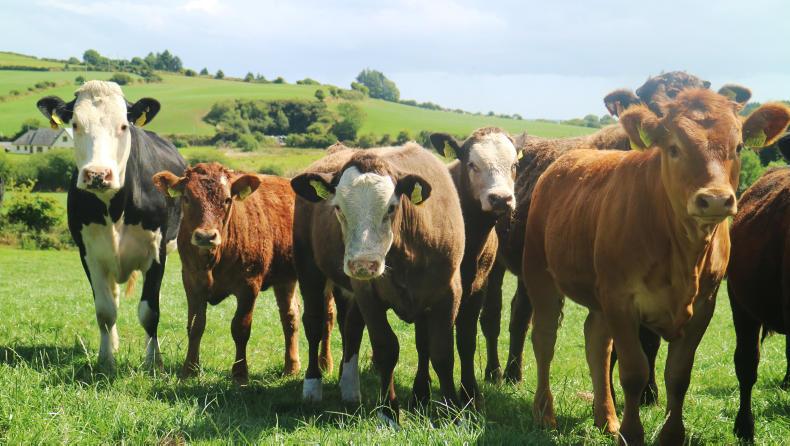In the first part of the 2018 Teagasc/Irish Farmers Journal BETTER farm beef challenge e-Profit Monitor analysis last week, we revealed that despite overall production (kg/ha) within the programme being up 17%, the group’s average gross margin (€/ha) was down 13%. As we can reveal this week, a sharp rise in on-farm costs was the main reason for the decline.
Analysis
Table 1 provides a detailed breakdown of the variable costs incurred among the different systems, while Figure 1 provides a year on year costs comparison between 2018 and 2017. Overall, total variable costs have risen by €349/ha to €1,158. This marks a 43% year on year increase.
By delving deeper into the variable costs, the reasons for such an increase start to become clear. Firstly, as farm plans begin to take shape, many farms implemented a systems change. As discussed last week, the number of weanling producers fell from seven to just one, while the number of under 16-month bull systems jumped from five to 12. Despite typically having the highest output, under 16-month bull beef also requires higher levels of inputs, predominantly in extra feed costs. Alternatively, weanling systems have lower output but usually incur the least costs.
So, as a large number of farmers moved towards systems which offered high levels of output, it stands to reason that variable costs would increase too. But was this the sole reason? I think a key metric here is the cost to output ratio.
Quite simply, this figure, given as a percentage, expresses a farm’s variable costs relative to its output. Roughly speaking, suckler farms will have a costs to output ratio of 50-60%. Looking at the cost to margin ratio for 2017, the overall group ratio was 53%. In 2018, it was 65%. With that, it can be determined that while extra production led to extra costs, other factors caused the disproportionate increase in costs. Unsurprisingly, the weather conditions were the biggest culprit.
During both the terrible spring conditions and the prolonged summer drought with no growth, many farmers were forced into significant levels of extra expenditure on feed. Farm feed costs soared by almost 70% (€200/ha) as a result. Attempts to kick-start growth during the summer with extra fertiliser spreading caused expenditure on fertiliser and lime to climb by 32% (€59/ha). Other costs, such as contractors rose by 56%, while there was also significantly higher vet costs in a few individual cases as a result of the bad spring.
Regional variation
While poor weather conditions impacted all farms, the extent to which farms were affected depended heavily on location. Broadly speaking, the whole country suffered during the spring with heavy rainfall, snow and stormy conditions delaying turn-out. However, it was a case of mixed fortunes during the summer as farmers in the south burned-up but northern farms witnessed record growth.
Figure 2 details the difference in feed costs by region for 2017 and 2018. As expected, southern counties were the worst hit, with feed costs in the south increasing by 168% (€469/ha) and by 106% (€282/ha) in the south-east. On the other end of the scale, feed costs in the west and north only rose by 25% (€83/ha).






 This is a subscriber-only article
This is a subscriber-only article









SHARING OPTIONS: